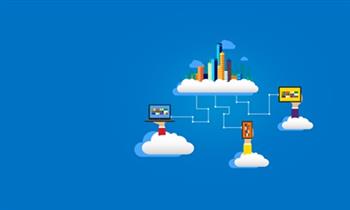Concepts and solutions to build Smart Hospitals
Sunday, June 20, 2021
Electronic health
The incorporation of medical devices into networks has changed the ways of working in the healthcare industry. By 2020, the widespread application of high-tech methods in medicine will lead to the implementation of the smart hospital project. It is estimated that by 2024, the smart hospital market will be worth 63 billion USD.

This concept is based on the optimization and automation of processes in the environment of information technology and communication of related objects. The purpose of this environment is to improve existing processes to provide advanced medical care facilities, and to open up new opportunities for medicine.
The “fourth industrial revolution” is also of fundamental importance. It involves combining network devices with cloud computing methods and big data analytics with artificial intelligence, which can be called «smart» such an infrastructure.
Thinking about the smart hospital definition, we can say that it is a relatively new direction at the intersection of medicine, information, health and business, which is related to the use of information technology to support health care support.
E-health includes ten key principles:
1. Efficiency.
2. Quality improvement.
3. Pay attention to personal data.
4. Expand patient possibilities.
5. Improve the relationship between patients and medical institutions.
6. Continuing training and professional development through information technology.
7. Realize secure data exchange.
8. Expanding the healthcare framework.
9. Ethical standards.
10. Accessibility for everyone.
Smart hospital software provides the following benefits to healthcare facilities:
• Patient involvement.
• Uninterrupted communication.
• Optimize workflow:
• Hospital navigation for patients and staff.
• Inform the patient.
• Monitor hospital assets.
• Facilitating data analysis.
Major challenges for hospitals on the way to becoming a smart hospital:
•Conflict between priorities:
• It may take several steps:
• Unstructured data and legacy systems must be integrated to ensure overall analysis and access to all collected medical data.
• All healthcare workers must be trained to effectively use smart devices and systems to support their workflow and ensure semi-automated data flow management.
The process of building a smart hospital around the world
It should be noted that e-health has not been fully implemented in every country in the world. Let’s analyze the experience of other countries in the field of e-health.
For example, Estonia was the first country in the world to decide to focus on creating a medical data registry and an electronic health system, according to Electronic Health Records (EHR).
The state has ordered the development of this system that requires 100% of all medical institutions in the country to use it. Therefore, in Estonia, there is a single system that keeps all patient data, medical history.
Another example is Latvia. Since Soviet times, there have been about 350 reports. The Latinos simplified the system and reduced the process to 35 forms. They built a single centralized system that works all over Latvia
In Denmark and Norway, all hospitals are connected to the EHR nationwide and send all data to a state registry.
In the US, there is no central nationwide registry of health data, although they have been using e-health for a long time. Americans are guided by the principle of “Meaningful Use.” This means that each medical organization decides for itself which components of e-health should be implemented.
For example, Baptist Memorial Health Care focuses on using new technology to provide patients with the information they need, make them comfortable during their stay, and manage their patients’ well-being when they return. home. In 2015, the healthcare facility launched the MyChart Bedside pilot program, providing patients and families with access to Baptist OneCare, the EHR platform used by the facility. Hospital smart rooms allow patients to view patient stats and medical team information via touch screens and tablets.
It should be mentioned that the US is the place where e-health projects and technologies are developed most often. A large number of startups and hubs in the field of e-health are emerging and growing in the US.
Indeed, Europe is developing more slowly in this respect, but the approach focused on the introduction of IIAs and electronic medical registration has an important advantage – interoperability.
Components used to build an intelligent hospital management system.
Smart hospital software development is the use of smart technology systems, smart mobility systems, and smart systems for patients, staff, and equipment. These systems provide intelligent functionality for everyday objects such as tablets and smartphones and medical devices.
The most common smart technologies used in smart hospital software are WiFi, active RFID, sensors, integrated platforms, mobile apps, wearables and various types of dashboards.

Leave a Reply